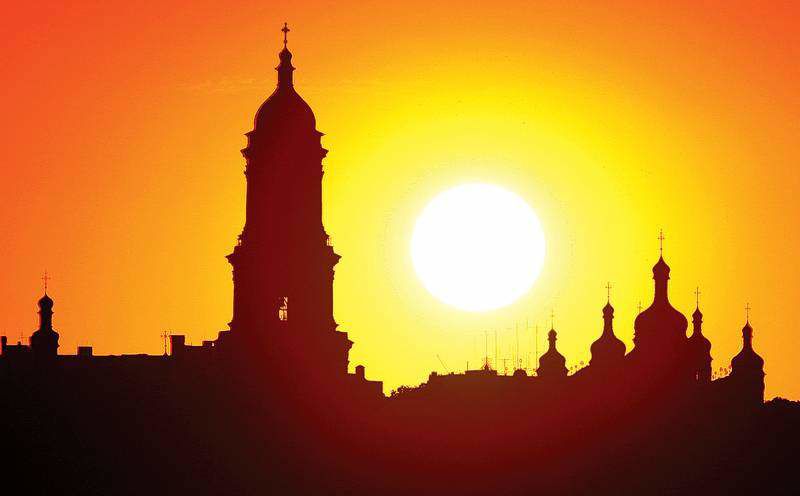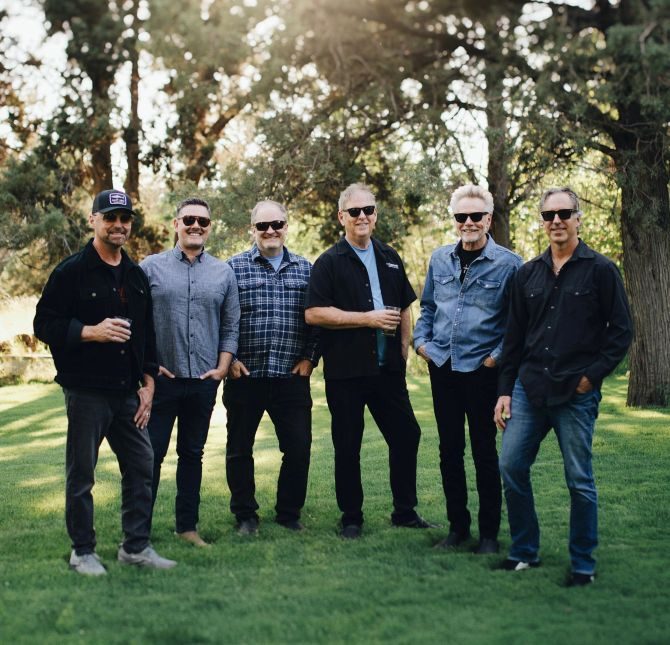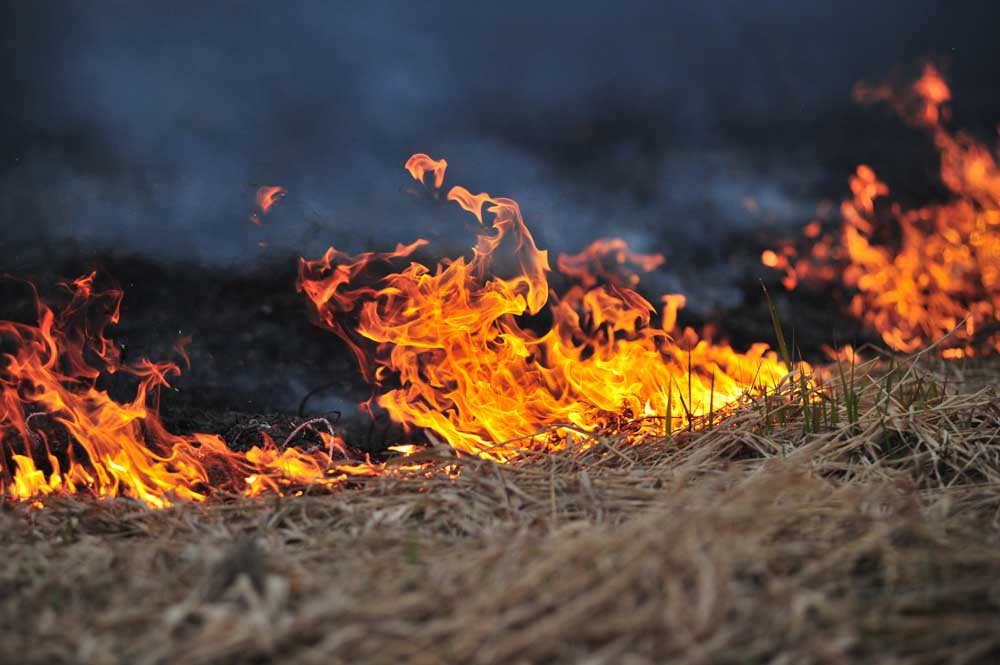Discover Kiev’s cathedrals, cobblestones and charm
Published 5:00 am Sunday, May 11, 2008

- A principal bell tower and Assumption Cathedral of the 1,000-year-old Cve Monastery is shadowed by sunset in the Ukrainian capital of Kiev in 2006. Founded more than 1,500 years ago, Kiev is one of the oldest and historically richest cities in Eastern Europe.
KIEV, Ukraine — Shining with Orthodox golden domes that rise from forested hilltops, crisscrossed by narrow cobblestone streets, and speckled by quiet, leafy parks, Kiev draws visitors with an Eastern European charm.
And for those who seek the exotic artifacts of the Soviet era — Lenin statues, imposing bronze monuments and colonnaded subway stations — Kiev has those too.
Founded over 1,500 years ago, Kiev is one of the oldest and historically richest cities in Eastern Europe. The site of the ancient Kievan Rus state, the forerunner of the Russian empire, it is considered the birthplace of Slavic civilization. The city endured the Mongol-Tatar invasion, was an important provincial capital in the Tsarist and Soviet eras, and in 1991 finally became the capital of an independent Ukraine.
Today, Kiev strives to be a proper European city, at the same time preserving its unique Slavic appeal. Cut in two by the broad Dnieper river, the city is a mix of medieval onion-domed Orthodox cathedrals, elegant turn-of-the-20th-century buildings and some stubbornly durable artifacts of the Soviet times, including giant statues and gloomy apartment blocks on the city’s outskirts.
Begin your tour with Khreshchatyk street, Kiev’s calling card, a broad avenue lined with grand Stalin-era brown brick buildings and chestnut trees. On weekends, when Khreshchatyk is closed to traffic, it is especially pleasant to walk and gives you a chance to mix with the local crowd — glamorous young women walking hand in hand with their lucky suitors, teenagers dancing to hip-hop music and retirees taking their giggly grandchildren for a stroll.
Khreshchatyk is at its best in May, when the chestnuts — the city’s symbol — are in full bloom and they fill the air with a delicate sweet aroma.
The street culminates with Maidan Nezalezhnosti, or Independence Square, where Ukrainians made history in 2004 by staging the peaceful Orange Revolution that overturned a fraudulent election and brought a pro-Western opposition leader to power.
Since then, the concept of opposition protests has become so popular in Ukraine, that hardly a day goes by in Kiev without a rally of some sort. Don’t get intimidated by flag-waving activists demonstrating in front of a government building or setting up a tent camp in the center of the city. In fact, you can join the democratic celebration.
Aside from the revolution, Maidan is noted for the soaring 130-foot statue of a young woman in the national costume representing the newly independent Ukraine. Many Ukrainians appreciate the statue’s political significance though question its taste.
Kiev is dotted with hundreds of medieval Orthodox cathedrals and monasteries — a reminder that it was here that the state of Kievan Rus (parts of modern-day Ukraine, Russia and Belarus) became Christian. In 988 A.D., the Slavic prince Volodymyr marched his servants into the Dnieper to be baptized and eventually converted the whole region to Christianity.
If you don’t have time for all of the churches, make sure you see at least three: St. Sofia and St. Michael cathedrals, both just up the hill from the Independence Square, and the landmark Kiev Pechersk Lavra, also known as the Cave Monastery, overlooking the Dnieper.
Founded in the 11th century by Volodymyr’s son Yaroslav, St. Sofia’s Cathedral was rebuilt in the 17-18th centuries in the so-called Ukrainian Baroque style, which is more modest in decoration that the classic Baroque. The cathedral managed to escape destruction by atheist Soviet authorities when a group of historians cleverly proposed to close it to worshippers and turn it into a museum, thus preserving its ancient mosaics and frescos.
The white-and-blue golden-domed St. Michael, dating to the 12th century, was not so lucky. The cathedral, also built in the Ukrainian Baroque style, was demolished in 1935 and was rebuilt only in the late 1990s.
To feel the atmosphere of Kiev of the beginning of 20th century, head to Andriivsky Descent, a cobblestone, serpentine street that is one of the oldest in Kiev. The Descent is often compared with Montmartre in Paris. There are numerous art galleries, artists eager to paint your portrait or caricature, and cozy cafes offering both Ukrainian and foreign cuisine. Those looking for souvenirs — national costumes, folk music and even Red Army uniforms — can find them here too.
Be sure to stop at the Mikhail Bulgakov museum, the house of the renowned Russian author of “The Master and Margarita,” a world-acclaimed novel satirizing the soulless Stalin-era bureaucracy. Bulgakov, who lived here in the early 20th century, once said that no city in the world is as beautiful as Kiev.
Next on the must-see list is the Kiev Pechersk Lavra — one of the oldest and the holiest Orthodox monasteries in Ukraine and a sacred pilgrimage site for Orthodox believers from all over the world. Located on the banks of the Dnieper, its sprawling territory is home to a dozen churches and museums, a forested park and massive underground caves. The saints buried inside are believed to have healing powers.
If it’s warm outside, take a boat tour on the Dnieper and get a splendid view of the city’s green hills and church domes. But don’t get intimidated by the giant steel woman staring at you. If the Soviet-era 200-foot-tall Motherland statue looks more menacing than hospitable to you, just ignore it. The rest of the city welcomes you.
If you go
KIEV, UKRAINE: www.traveltoukraine.org/contact.htm or 202-223-2228.
VISAS: Citizens of most Western countries and Japan don’t need visas for stays of up to 90 days.
GETTING THERE: Flights to Kiev are available from major Western European cities, New York and Toronto.
LANGUAGE: Most street signs are Cyrillic, which will be a challenge to foreigners. But an increasing number of Kievans, especially among the younger generation, speak English and will be able to give you directions.
DON’T DRINK THE TAP WATER: It is advised to rely on bottled water.
GETTING AROUND THE CITY: Kiev has a well developed public transportation system, including the subway, buses and trolleys. But the city is also infamous for its traffic jams, so it’s often better to walk. You can also easily hail a taxi just by sticking your arm out. But be prepared to bargain with the taxi drivers; otherwise, you might be taken for a ride.








